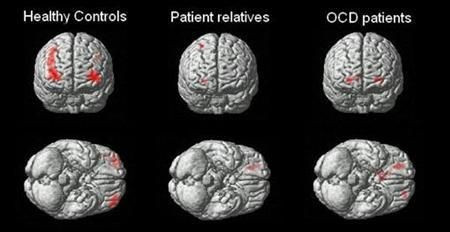How To Calm Your Anxiety And OCD

People with anxiety or obsessive-compulsive disorder (OCD) often engage in what’s known as “safety behaviors.” For OCD sufferers, that might involve checking the stove twenty times before leaving to make sure it’s turned off. These incessant behaviors are a coping mechanism to help the person reduce their fear of threats, whether real or imagined. It may not be a healthy or productive behavior, but it increases feelings of safety as an inherent way of combating anxiety.
Cognitive behavioral therapy for anxious people, then, aims to reduce these safety behaviors and re-wire a person’s brain to approach fears differently. If an OCD person feels as though they have to avoid choosing the fourth water bottle because they’ve associated that action with a negative future event occurring to a family member, a therapist will often advise the patient to face their irrational fear, choose the fourth water bottle, and watch as nothing terrible happens. This is known as "exposure therapy," a common mechanism for treating anxiety disorders.
But what if a combined approach — in which anxiety sufferers merged their own safety behaviors with new therapeutic methods — worked even better? That’s the notion behind a new study out of Concordia University in Montreal, Canada. The researchers note that existing therapies for anxiety or OCD often aren’t as effective as they should be, due to patients finding them difficult to embrace. They wanted to see if there was a way to make treatment easier, and more acceptable, for anxiety sufferers.
“Traditionally, psychologists thought that fading out or eliminating these [safety] behaviors entirely should be the primary focus of the therapy used to combat anxiety disorders,” said Adam Radomsky, psychology researcher and an author of the study, in a press release. “But we found that changing those behaviors and giving patients greater agency is much more effective.”
In the study, the researchers examined 157 people, all of whom were experiencing some level of mental illness — ranging from mild anxiety to diagnosed OCD. They had the participants adapt their old safety habits into new ones that they could use as coping mechanisms during exposure therapy. The study showed that employing new versions of safety behaviors actually helped the patients even more than their regular safety behaviors. But perhaps most importantly, this method also involved the participants choosing when they were ready to move forward with the new treatment, giving them time to adjust to novel mindsets.
“This is different from the standard approach in which therapists encourage people to drop their safety behaviors at the outset of the therapy, which often leads people to drop out or refuse the treatment,” said Hannah Levy, a psychology researcher and author of the study, in the press release. “Under the right conditions, safety behaviors have the potential to make the therapy more effective, and more acceptable.”
Source: Levy H, Radomsky A. It’s the who not the when: An investigation of safety behavior fading in exposure to contamination. Journal of Anxiety Disorders, 2016.
Copyright Medical Daily News Service. All rights reserved.





















